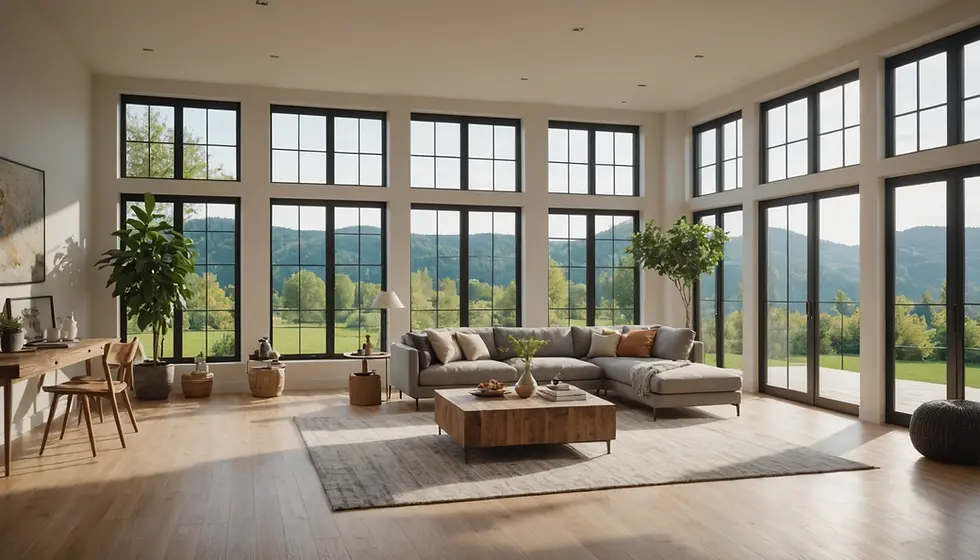How Sustainable Architecture Addresses Water Challenges
- Immanuel Raj
- May 23
- 4 min read
In a world where water scarcity is becoming increasingly common, sustainable architecture is stepping up to address these pressing challenges. Sustainable design not only emphasizes the importance of sustainable resources but also highlights innovative solutions for water conservation. By implementing unique architectural strategies, we can create structures that conserve water and contribute to the overall health of our environment.
Understanding Sustainable Architecture
Sustainable architecture refers to the practice of designing buildings that minimize environmental impact while providing comfort and utility for their occupants. This approach encompasses various methods, including energy efficiency, the use of renewable resources, and crucially, water management. The goal is to create structures that use fewer resources, generate less waste, and accommodate the needs of a growing population without compromising the planet's health.

Efforts in sustainable architecture to tackle water challenges are of particular importance given that nearly two billion people live in countries experiencing urban water scarcity, according to the United Nations. This is a staggering statistic, highlighting the critical need for efficient water management within our built environments. By employing innovative design techniques, we can mitigate the effects of water scarcity while promoting a healthier planet.
Innovative Design Strategies in Sustainable Architecture
Water management in sustainable architecture includes a variety of strategies aimed at reducing water consumption and enhancing the efficient use of available resources. Here are some ways architects are tackling water challenges:
1. Rainwater Harvesting Systems
Rainwater harvesting has emerged as a practical solution for conserving water in both residential and commercial buildings. This approach captures rainwater from rooftops and directs it into storage tanks for future use. By utilizing rainwater for irrigation, toilet flushing, and other non-potable needs, buildings can significantly reduce their dependency on municipal water systems.

2. Greywater Recycling
Another effective strategy is the use of greywater recycling systems. Greywater refers to gently used water from sinks, showers, and washing machines. Sustainable architecture incorporates systems that treat and reuse greywater, reducing the need for fresh water. By filtering and treating this water on-site, buildings can efficiently utilize a resource that would otherwise go to waste.
3. Smart Irrigation Systems
Modern technology plays a pivotal role in sustainable architecture, especially in managing water use for landscaping. Smart irrigation systems can automatically adjust watering schedules based on weather conditions and soil moisture levels. This not only conserves water but also promotes a healthy landscape, nurturing plants that thrive without excess water.
What are the five ways to conserve water?
Incorporating sustainable practices into our daily lives can have a lasting impact on water conservation. Here are five ways individuals and communities can take action:
Fix Leaks Immediately: Whether in homes or public spaces, leaks can waste significant amounts of water. Regular checks and quick repairs can prevent unnecessary loss.
Use Water-Efficient Appliances: Opting for appliances with high Energy Star ratings can significantly reduce water usage. Dishwashers and washing machines with water-efficient features are excellent investments.
Collect Rainwater: Just as buildings can collect rainwater, homeowners can set up barrels to catch rain from their gutters. This water can be used for irrigation and other non-potable purposes.
Install Low-Flow Fixtures: Low-flow showerheads and faucets provide a way to enjoy water while using less. This simple switch can lead to significant water savings in daily activities.
Implement Xeriscaping: This landscaping technique focuses on utilizing drought-resistant plants and efficient irrigation methods. Xeriscaping minimizes watering needs and maximizes natural beauty.
These everyday practices contribute to a larger movement toward sustainable living, encompassing not just architecture but also individual responsibility.
Benefits of Sustainable Water Management in Architecture
The integration of effective water management practices in sustainable architecture offers numerous benefits, which can be seen both economically and environmentally. By addressing water challenges through architectural design, buildings can achieve:
1. Reduced Water Bills
Incorporating water-efficient systems can lead to substantial savings on utility bills. With decreasing water availability, reducing consumption is not just environmentally responsible but also economically viable.
2. Increased Property Value
Sustainable features can enhance a property’s value. Homes and buildings that emphasize water conservation are often more attractive to buyers, especially as awareness of climate issues grows.
3. Enhanced Resilience
Buildings designed with water challenges in mind are better equipped to handle extreme weather conditions. Flood-resistant designs and efficient drainage systems protect property from water damage, thus enhancing overall resilience.

The Future of Water in Sustainable Architecture
As urbanization continues, the need for innovative water management solutions in architecture will only become more critical. Sustainable architecture must evolve, focusing on responsive designs that consider geographic and climatic conditions. Future innovations might include:
Living Roofs: These green roofs can absorb rainwater, support biodiversity, and help cool buildings, reducing the load on local water treatment systems.
Advanced Water Filtration: Future technologies could facilitate on-site water treatment systems that allow buildings to recycle and purify used water more efficiently.
Collaboration with Nature: Nature-based solutions can enhance architecture by integrating systems that work with local ecosystems, such as utilizing wetlands for water filtration.
This ongoing evolution demands a commitment to education and collaboration among architects, engineers, and community members.
Taking Action and Leading Change
The responsibility of addressing water challenges does not rest solely on architects and builders; individuals, communities, and governments all play crucial roles. By promoting sustainable architecture practices and adopting conservation methods, everyone can contribute to a more sustainable future.
We can support ongoing developments in sustainable architecture by educating ourselves and advocating for policies that encourage water-efficient building practices. Addressing water challenges starts with awareness and can result in a mindful approach to building and living.
Through various innovative design strategies and community engagement, sustainable architecture can significantly mitigate water challenges and lead our society toward a more sustainable future. For more information on effective techniques, explore various water conservation techniques available here.




Comments